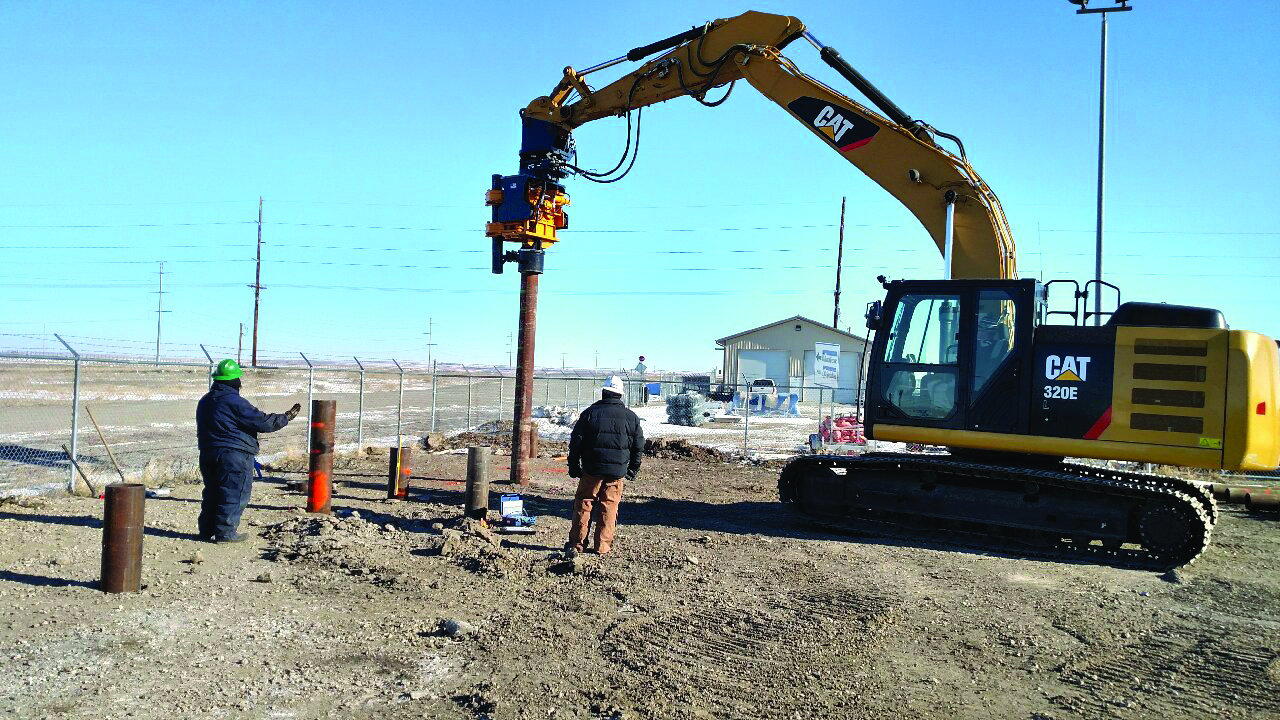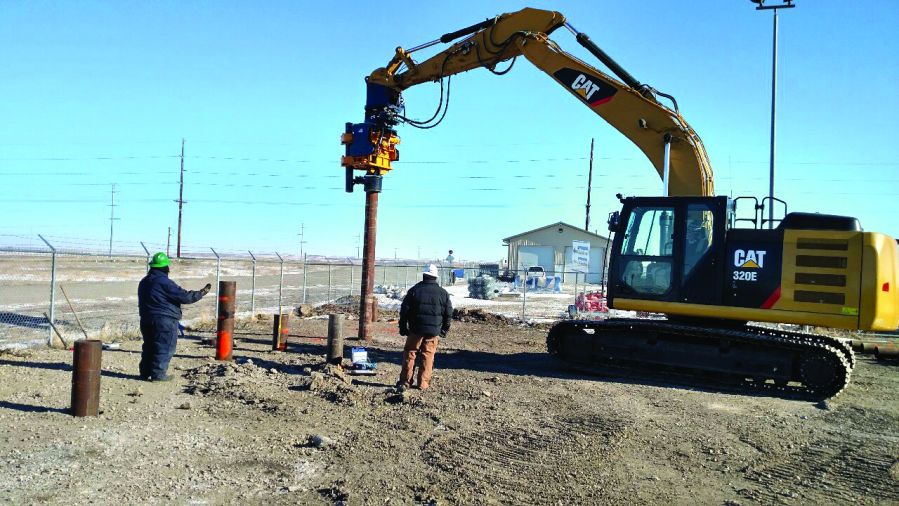S&B Drilling, based in Williston, North Dakota, installs helical piers for oil drilling operations throughout the Bakken region. The work they do is critical—the piers they install support the foundations for oil well pumpjacks, which are the mechanisms that extract oil from deep underground. There are seven sizes of pumpjacks, the largest of which can weigh upwards of 90,000 pounds—and nearly double when loaded with oil and the weight of the pump stem. In addition to this massive weight, the foundations installed by S&B must be able to withstand the rigors of a constant pumping motion as well as the region’s harsh weather conditions over a 30-year design life.
Pipe piles are installed using a vibratory hammer mounted on an excavator in S&B Drilling’s test yard
In the fall of 2017, S&B expanded their services to include a foundation engineering technique that involves placing the pumpjacks on a pre-cast concrete slab with steel pipe pile-supported foundations. Because most oil well pad sites are accessible only by low-maintenance roads that have load restrictions during much of the year, S&B acquired a hydraulic vibratory hammer and a hydraulic pile-driving hammer that could be mounted on an excavator. The use of an excavator instead of traditional heavy equipment such as a crane gives S&B the ability to access these sites at any time.
To establish design parameters for these foundations, S&B hired AET to provide pile-driving criteria in addition to other services and Barr Engineering to provide structural engineering services. Barr’s team determined the number, location, and loading of piles required to support each pumpjack. They also determined how the pipe piles should be connected to the pre-cast concrete slab.
The pipe piles for the foundations measured 10.75 inches in diameter and about 25 feet long, and could be lengthened by welding on spliced sections. Knowing this, AET got to work determining the appropriate lengths necessary to achieve the load-bearing capacities determined by Barr. (Each pile’s load-bearing capacity depended on its location underneath the slab.) AET also provided subsurface exploration to characterize soil types and strengths, PDA analysis on test pipe piles, and seismic analysis to make sure vibrations from pile-driving activities wouldn’t disrupt the existing well during installation.
Based the work of the AET and Barr teams, as well as extensive testing at S&B’s on-site test yard, we determined that the pipe piles, depending on site-specific soil conditions and their location underneath the slab, should be driven to between 20 and 40 feet to meet the required load-bearing capacities.
With the foundation design parameters, including our pile-driving criteria, in hand, S&B is prepared to start the installation of these superior foundation systems this spring.
Walter Slack is a Senior Geotechnical Engineer and manager of AET’s Williston, ND office. Al Hovick is the manager of AET’s ND offices.



